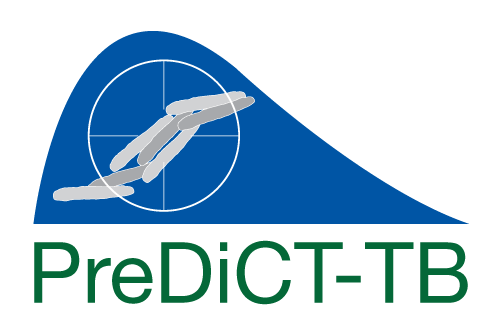Tuberculosis (TB) is the single biggest killer among infectious diseases, particularly in developing countries. It infects over 10 million people worldwide every year and kills 1.7 million. Treatment takes at least six months, it usually involves a combination of 4-7 drugs, and many patients struggle to take their antibiotics properly, fuelling the rise of drug-resistant strains of the disease. Despite all this, few new drugs for TB have been developed and registered since the 1970s.
By bringing together academic researchers with expertise in the biology, immunology and imaging of the disease, as well as industry scientists specialising in drug development, IMI’s PreDiCT-TB project set out to speed up the search for new, more effective combinations of treatments to tackle this deadly disease. In particular, the project aimed to evaluate and improve the effectiveness of preclinical laboratory models in predicting the success of drug candidates in clinical trials, which has been a major bottleneck in TB drug development.
Comparison of preclinical and clinical data
In order to achieve that, the project created a large database of preclinical data with many different preclinical models, from simple experiments in broth through to animal models – the largest and most diverse preclinical dataset available in TB to date. The project team also undertook a comprehensive review of published data from clinical trials, and created a large database containing 31 clinical trials with more than 15 000 participants.
Furthermore, PreDiCT-TB scientists performed the first systematic quantitative comparisons of preclinical and clinical results in order to evaluate how effective different preclinical models are in predicting the success of drug candidates in clinical trials. The researchers took a mathematical modelling approach to integrating that information, putting it together in a way that can be used by drug developers to predict what will happen in clinical trials. Altogether, the project produced a series of tools, which drug developers can use to increase the probability of them choosing the right drug-like compounds and getting them through clinical trials successfully.
New biomarkers for diagnosing TB
The project also developed new biomarkers, which enable scientists to understand how the TB drug candidates work in preclinical and clinical trials. Currently scientists measure the effect of potential new treatments either by culturing TB bacteria from a patient-derived specimen, or by using DNA-based diagnostic tests. Growing a culture is very slow, taking up to three months before a result is available. DNA tests on the other hand are fast, but they remain positive even after the bacteria is dead, making them unsuitable for tracking the effectiveness of potential new treatments.
A new method fine-tuned by the PreDiCT-TB project is based on measuring ribosomal RNA. The RNA is easy to detect even when there are very few organisms present, and unlike the DNA, it does not survive long after antibiotics kill the bug. The method, called the mycobacterial load assay (MBLA), offers a much faster way to diagnose tuberculosis and has the potential to improve both the speed and effectiveness of preclinical and clinical TB trials.
Reducing the use of animals in research
PreDiCT-TB scientists have also done a lot of work to improve the design of preclinical studies and decrease the number of animals used when possible. Additionally, the project evaluated the effectiveness of different animal species in predicting the success of potential TB treatments. In some cases, this resulted in moving to the use of lower phylogenetic species such as zebrafish.
For example, one of the SMEs in the project developed a zebrafish high-throughput screening model. The model enables them to screen very large numbers of TB drugs, and combinations of drugs, very efficiently. The tool may become very valuable in early phases of clinical development.
For the benefit of industry, academia and SMEs
The industry benefited from the new resources and tools developed within the project, which they could not have developed on their own. They also benefited from the network of TB scientists, which will continue to exist beyond the lifetime of the project.
The academic community likewise benefitted from contacts with the pharmaceutical industry and SMEs, as well as from access to industry data and compounds. Thanks to this project, they learned a great deal about the drug development process and gained an understanding of how their models and skills could be used to enable better and faster drug development.
The SMEs in the project also benefitted from the network and resources within the project. Furthermore, contacts with the pharmaceutical industry enabled them to learn about the needs of their customers and gave them the necessary support and insights to develop and optimise important preclinical tools, such as the zebrafish high-throughput screening model.
What’s next
All of the key resources generated by the project are, or soon will be, publicly available. The databases of preclinical data and clinical data – both of which are a key resource for the wider TB drug development community – have permanent homes that will be funded for at least the next decade.
Some of the technologies developed within the project, such as the MBLA, have been made available to any external scientific group at a cost. Finally, a lot of the code base for many of the modelling and simulation tools that have been developed will be soon available through publicly accessible websites.
Read the interview with project coordinators

